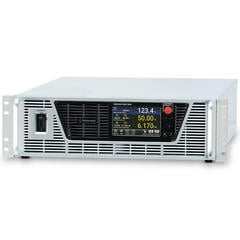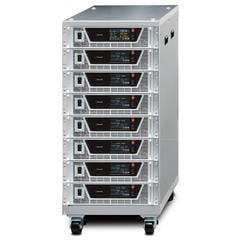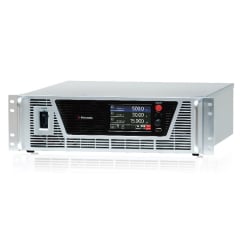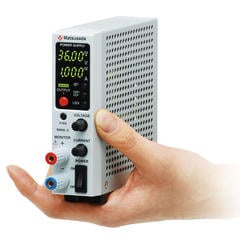Wiring and Operation
Connection of load
- Use short, heavy-gauge lead wires for the connection.
- Please use PVC electric cable (105°C) that can fully tolerate the voltage used. It is necessary to consider current carrying capacity, length limit of output wire by sensing (0.5 V/lead), and so on for wiring with the load. Please refer to the following diagram to determine the thickness of the cable.
| AWG | mm2 | Max current (A) |
|---|---|---|
| 18 | 0.823 | 2.3 |
| 16 | 1.31 | 3.7 |
| 14 | 2.08 | 5.9 |
| 12 | 3.31 | 9.3 |
| 10 | 5.26 | 15 |
| 8 | 8.37 | 24 |
| 6 | 13.3 | 37 |
| 4 | 21.1 | 60 |
| 2 | 33.6 | 94 |
| 1 | 42.4 | 119 |
| 1/0 | 53.5 | 150 |
| 2/0 | 67.4 | 190 |
| 3/0 | 85.0 | 239 |
| 4/0 | 107 | 302 |
Use several cables or copper bars for models over 302 A.
Parallel connection of load
Good
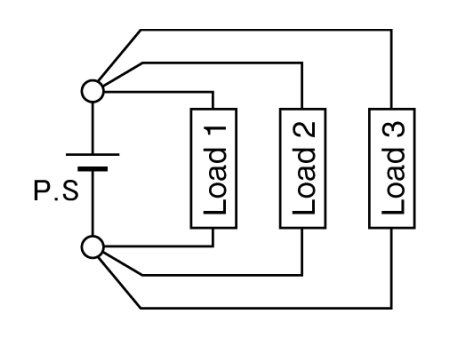
Bad
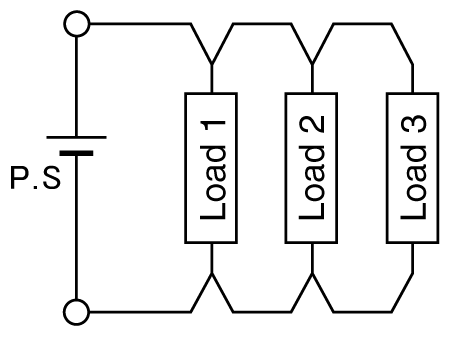
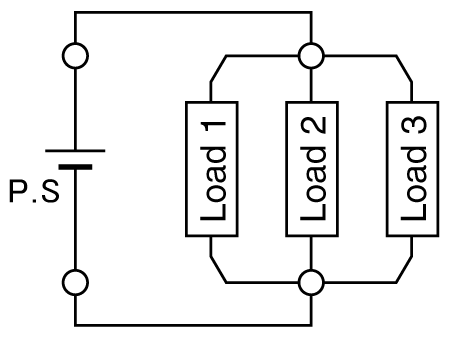
A power supply has no direct branching, but the load is branched using cables.
Specifications Definitions
The following definitions shall basically take precedence. In case there is any specific definition described in other parts of the brochure, the definition has higher priority than the following ones. The specification in this brochure indicates the value at rated power output (full scale) shown after a two-hour warm-up.
Scope of Specifications
The following specifications are applied within a range of 10 to 100% of the rated output.
- Ripple
- Stability
- Regulations
- Temperature coefficient
- Linearity of output
- Linearity of monitor
- Linearity of indications

Ripple
Displays rms including high-frequency noise.
Preset
Preset values are approximate. For precise settings, enable the output and measure it directly. When accurate setting is required, actually output with no load and set the voltage. Also, set the current setting to the desired value by outputting with the output terminal shorted and gradually increasing current.
Recommended Products
Matsusada Precision's high-performance DC power supplies



